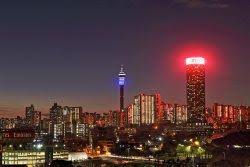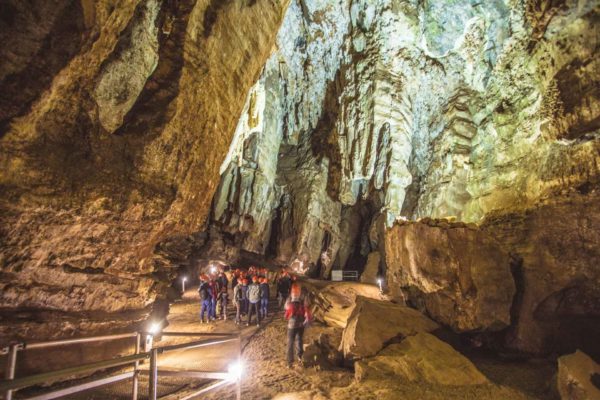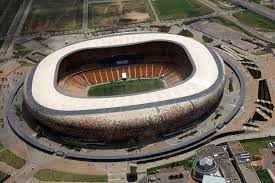Exciting Tours
Let us help you start a Journey of Exploration in South Africa
Let us help you start a Journey of Exploration in South Africa

Gauteng is the Sesotho word for "place of gold", because it was built on the wealth of gold found underground throughout most of the province. Although gold is still mined here, the economy is diversified with sectors such as finance, manufacturing and other mining activities. Gauteng covers 1.4% of the South African land area and contributes 33% to the national economy and 10% of the GDP of the entire African continent.
| Cullinan Diamond Mine | |
|---|---|
 |
Come and enjoy with us exclusive surface and underground tours of the working Cullinan Diamond Mine. The small mining village of Cullinan, located east of Pretoria, gained world-wide attention with the discovery on June 25 1905 of an incredible 3108 carat stone, dubbed the Cullinan Diamond - the largest uncut diamond ever found. Over the years more that 120 million carats have been mined. Other notable gemstones unearthed from the Cullinan Mines include the 755 carat Golden Jubilee, the 600 carat Centenary, and the 530 carat Great Star of Africa and the Lesser Star of Africa, both cut from the Cullinan diamond itself. Today, the giant open pit mine at Cullinan is four times larger than the famous Big Hole of Kimberley! The Cullinan Mine is still fully operational, and in fact still produces 25% of the world's gem-quality diamonds. About Cullinan Diamond Mine Tours: Recently, a number of record breaking blue diamonds have been found including a 122.52 carat diamond which achieved a value of US$ 27.6 million in 2014. You will also get the opportunity to visit the Cullinan Mine Diamond shop for some unforgettable diamond and jewellery shopping. |
| Pretoria City | |
 |
Join us for a fascinating City Tour through Pretoria, showing you a large part of South Africa's History and the beautiful Jacaranda trees. Pretoria was founded in 1855 as the capital of the old Transvaal Republic and is now the Administrative Capital of South Africa. The Government's headquarters are here and most of the world's High Commissions and embassies can be found in this city, also known as the Jacaranda City. The famous Union Buildings can also be enjoyed for its tranquil gardens and the building itself is a masterpiece. |
| Union Buildings | |
 |
The statue of Nelson Mandela in the Union Buildings grounds, Pretoria, Gauteng is a bronze sculpture of former President of South Africa and anti-apartheid activist Nelson Mandela. For security reasons, the Union Buildings may not be visited inside. This is the home of the government and presidency and is South Africa's most prominent building. The view of the city lying in the valley below is splendid when standing in front of the building, and all sides of the building is surrounded with magnificent gardens. |
| Voortrekker Monument | |
 |
Built in 1949, in remembrance of the Great Trek and the Blood River Battle, this monument is the "Place of Pilgrimage" for the Afrikaans population. The majestic Voortrekker Monument is situated in the northern part of South Africa in the Pretoria (Tshwane) region in a nature reserve. It is a unique Monument which commemorates the Pioneer history of Southern Africa and the history of the Afrikaner and is situated in a beautiful setting. The Monument was inaugurated in 1949. It was designed by architect Gerard Moerdijk. In the Hall of Heroes is the world’s longest historical marble frieze. A tapestry with more than three million stitches is housed in the Cenotaph Hall. |
| Church Square | |
 |
The first church in Pretoria was built on this site. The current layout was designed by Vivian S. Rees-Poole in 1912 and was meant to imitate London's Trafalgar Square and Paris' Place de la Concorde. The best known feature of Church Square is the large bronze statue of former president Paul Kruger. Mr. Sammy Marks commissioned the statue of Paul Kruger and it was sculpted by Anton van Wouw. Although it was cast in Italy near the turn of the century, it was only erected on the square in 1954. The Square is surrounded by many historic buildings, some having been erected as early as 1891. The old Raadsaal (council chambers), Centenary Building, Netherlands Bank and others are amongst the famous buildings. Another famous building in the vicinity is The Palace of justice, where several high profile cases were held, including the well-known Rivonia trial of Nelson Mandela and other political prisoners in 1964. It was during this trial that Nelson Mandela was sent to life imprisonment. |
| Gold Reef City | |
 |
When you visit this combination of a historical and amusement park and casino, you will experience an old mining town during the gold-rush times in South Africa. The streets and houses have been rebuilt on the grounds of a former gold mine and are true to the originals of that era. You have the opportunity to revisit a gold mining town complete with Saloons, General Stores, sweet shops, a steam train and penny farthings. Watch gold diggers in action when you take a 200meter underground trip down a shaft that used to produce more gold than any other mine in the world. |
| Johannesburg City | |
 |
Johannesburg - Place of Gold, and often called the heartbeat of South Africa, and the industrial capital of Gauteng. The city was built on the discovery of gold, and continues today to produce its own unique treasures. Experience the passion, the pride and the endless possibilities. Feel the spirit of its people in powerful monuments, echoing with the past. This is the gateway to Many Southern African tourist hotspots and local ones like God Reef City, museums and botanical gardens. Also known as the city of trees, Johannesburg has more than 6 million trees and is one of the largest Urban Jungles in the world. From the top of the Carlton Centre you are able to see its beauty from its unmistakable skyline to the many historical landmarks in and around the city. With its diversity in culture, colours and rich heritage, Johannesburg is sure to steal your heart, and leave a lasting imprint in your mind. What awaits you is an unforgettable, non-stop adventure with its historical buildings and streets. Price available on request |
| Apartheid Museum | |
 |
Illustrating the rise and fall of apartheid, the Apartheid Museum is the first of its kind. It has twenty two individual exhibition areas which take the visitor through this dramatic, emotional journey of the story of the state sanctioned system which was based on racial discrimination. Although the dark images, sounds and atmosphere prevalent to this era in South Africa resonate and linger in the senses, you will emerge with a feeling of hope and triumph. |
| Soweto | |
 |
This township, also known as "e-kasi” which means Township - in township slang amongst the youth of Soweto is vibrant and alive with cultural diversity and interaction. It will offer you the opportunity to see historical places such as Nelson Mandela's former Orlando West home, where he stayed when he was a lawyer in Johannesburg. The Hector Peterson Memorial, named after 13 year old Hector Peterson, who died of gunshot wounds during 1976 Soweto uprising in Vilakazi Street, The Tutu House and the Regina Mundi Church. Other interesting places are the Baragwaneth complex where you can stop at the huge taxi rank for a walk about. Soak up the sounds, tastes and "smells" of Africa through your visit to an informal open-air butcher shop, herbalists, barbers and markets. Enjoy a "Smilies" breakfast (the meat of a cow or sheep's head) and sip on an Omqombothi (traditional beer) at one of their local sjebiens. This city of surprises and contrast takes you from corporate business to pavement hawkers and from affluent mansions to people living in shacks made from tin and card board. |
| Rhino & Lion Park and Wondercave | |
 |
The Reserve has more than 30 different species of animals excluding a variety of cat species they host; from buffalo, white rhino, zebra, eland, wildebeest, springbuck, ostrich to lion, tiger, leopard, hyena, wild dog and many more. The Wondercave is more than 5 Million years old with formation of up to 15 metres. This is a heritage site is in the park within the Cradle of Humankind. The Rhino and Lion Nature Reserve is set in the heart of the Cradle of Humankind World Heritage Site, west of Johannesburg. One of the private game reserves in Gauteng, it opened in 1985 with two white rhinos, but today boasts more than 600 animals. There are more than 30 species in the reserve including buffalo, lion, white rhino, wild dog and leopard and more than 20 antelope species, making this reserve one of the best tourist attractions in South Africa. |
| Cradle of Humankind | |
 |
Only a few minutes drive from Johannesburg, nestling in the peaceful Sterkfontein valley, you will discover the Cradle of Humankind, a World Heritage Site, and certainly the world's richest hominid site. There are 600 limestone caves discovered on the site which includes the Sterkfontein Caves. The fact that this is the site where the 2.3-million year-old fossil Australopithecus africanus(nicknamed "Mrs. Ples") was found in 1947 by Dr Robert Broom. The universal value of this site cannot be over-emphasised, because it contains a complex of paleo-anthropological sites, which have yielded some of the most valuable evidence, world-wide, of the origins of modern humans, therefore the name "Cradle of Humankind". Maropeng Centre - An exciting, world-class exhibition, focusing on the development of humans and our ancestors over the past few million years, can be viewed at this centre. A massive burial mound called the Tumulus, awaits you as you arrive at the centre. This is your entrance to learning the secrets of our ancestry. |
| Sterkfontein Caves | |
 |
These caves are the discovery site of a myriad of hominid and other animal fossils. They date back more than 4-million years, to the birth of humanity. "Mrs. Ples", a 2.3-million-year-old Australopithecus skull, and "Little Foot", an almost complete Australopithecus skeleton that is more than 3-million years old are the most important and most famous of these fossils discovered here .We learn a lot about the prehistory of modern humans, called Homo sapiens. The most recent discovery of "Australopithecus Sediba", made in 2009, of two partial skeletons is between 1,78 and 1,95 million years old. The discovery was made by Professor Lee Rogers Burger and his 9 year old son, Matthew. |
| Stadia Tours | |
 |
Sport Stadia - Private Tours The public can enjoy a guided tour of the stadiums with friends and family. These tours provide a personal touch, giving the opportunity to ask plenty of questions of the tour guide. Spend a day visiting the three most famous sport stadiums within the Gauteng Province. These stadiums are world-class arenas for hosting the soccer world cup events during 2010. Loftus Versfeld is one of South Africa's top stadiums with a seating capacity for 50 000 people, and is situated in Pretoria (Tshwane), 5 kilometres from the city centre. It is one of the 2010 FIFA World Cup venues and five first-round matches and one second-round match were be hosted here. This stadium is home to Mamelodi Sundowns, the Blue Bulls Currie Cup rugby team and the Bulls Super 14 rugby squad. Loftus stadium was named after Mr. Robert Owen Loftus Versed, the founder of organised sports in Pretoria, a man committed to the task of uplifting sport in South Africa. The floodlights, sound system and scoreboards at the stadium had to be upgraded to qualify for selection as a first and second round venue for the FIFA soccer world cup later this year. Designated media areas were constructed in the lower level of the west stand. Ellis Park Stadium, also known as Emirates Airline Park, is located in the centre of Johannesburg and has hosted many epic sporting events including the final of the 2009 FIFA Confederations Cup between Brazil and the United States. The ground was given a significant face-lift before the Confederations Cup finals and now seats 55,686. Ellis Park was first built in 1928 as a rugby union stadium. It was demolished and rebuilt in 1982, again exclusively for rugby. It was named after JD Ellis, a Johannesburg city councillor who approved the use of the land for a stadium, setting aside a full 13 acres. The ground will always occupy a special place in the hearts of the country's sporting fans after the South African rugby team shocked New Zealand to lift the 1995 Rugby World Cup trophy soon after being allowed back onto the world sporting stage. It was a moment that brought the people of South Africa together in celebration as the iconic scenes of Nelson Mandela holding aloft the trophy at Ellis Park were beamed around the world. FNB Stadium – Soccer City - This iconic 94 736-seater is the largest venue in South Africa and the country’s proud global colossal located in Nasrec, south of Johannesburg. The unique design of FNB Stadium is highly regarded internationally, and is often fondly referred to as the “Calabash” or “African Pot” after being reconstructed to the tune of R3.3 billion in time for the first ever African World Cup in 2010. Previously known as Soccer City, the stadia has been the centre of historic events, starting with the first speech from former President Nelson Mandela in 1990, a few days after being released from prison where he served 27 years. The venue has hosted the biggest sports and music events this country has ever seen, including the opening and closing ceremonies as well as the final of the 2010 FIFA World Cup ™. The continental Africa Cup of Nations final in 2013 was also played at the stadium. FNB Stadium regularly takes centre stage to full houses for domestic and international football matches. It is a preferred podium of choice for the Soweto derby that involves two South African Premier Soccer League football giants, Kaizer Chiefs and Orlando Pirates. International rugby test clashes and the biggest global music superstars, including U2, Lady Gaga and Justin Bieber have also featured here to record attendances. FNB Stadium is, and has been, the go-to platform for other major events in the country, including the funeral of political activist Chris Hani in 1993 and the moving memorial service tribute to Mandela in 2013. |
| Diamond and Tanzanite Tours and Sales | |
 |
Whilst in Africa make sure that you enjoy a Diamond and Tanzanite Tour with us as well. We can arrange a diamond tour to suit your requirements, but would also like to specifically mention the unique Star Cut diamond with eight additional facets. With a total of 66 facets, this Star Cut radiates a star so bright and clear that it could have easily fallen from the night sky. The extraction and sale of each of these diamonds, while it may be precious to you, brings great value to society too. One percent of sales from every Star Cut diamond is donated to a social upliftment programme, encouraging skills development and job creation to the town that has brought the world so much beauty. The Eight Extra Facets are the defining features of the cut that sets this Star Cut Diamond from other diamonds. Curious? We will gladly take you to explore this opportunity and promise that you will not be disappointed. Tanzanite is an extraordinary gemstone. It occurs in only one place worldwide. Its blue, surrounded by a fine hint of purple, is a wonderful colour. It has rapidly become one of the most coveted gemstones in the world. It is named after the East African state of Tanzania, the only place in the world where it has been found. Africa? Does anyone think of gemstones when they hear that name? Well they should, because Africa is a continent which provides the world with a multitude of truly magnificent gemstones, like tanzanite for example. On its discovery in 1967, it was enthusiastically celebrated by the specialists as the 'gemstone of the 20th century'. They held their breath in excitement as they caught sight of the first deep-blue crystals which had been found in the Merelani Hills near Arusha in the north of Tanzania. Millions of years ago, metamorphic schists, gneisses and quartzite formed impressive, flat-topped inselbergs on a vast plain in the shadow of Kilimanjaro. The precious crystals grew in deposits on the inside of these unusual elevations. For a long, long time they were hidden from the eye of Man, until one day some passing Masai shepherds noticed some sparkling crystals lying in the sun and took them along with them. Tanzanite comes from the foothills of Mount Kilimanjaro in Tanzania and is one of the most intriguing and desirable precious gemstones of modern times. It has a radiating, dazzling kaleidoscope of royal blue, violet, indigo, lilac and periwinkle. This stone is a thousand times rarer than diamonds, and has enchanted discerning jewellery buyers seeking rarity and distinction. Take the opportunity with us to obtain these precious stones. |

This natural water feature marks the beginning of the Blyde River Canyon…

There are 600 limestone caves discovered on the site which includes the Sterkfontein Caves…

Experience exceptional hot air balloon rides from the finest venues in South Africa…
Copyright © 2020 - All Rights Reserved - Sunstreak Tours and Transfers
Website by InfoSecure Web